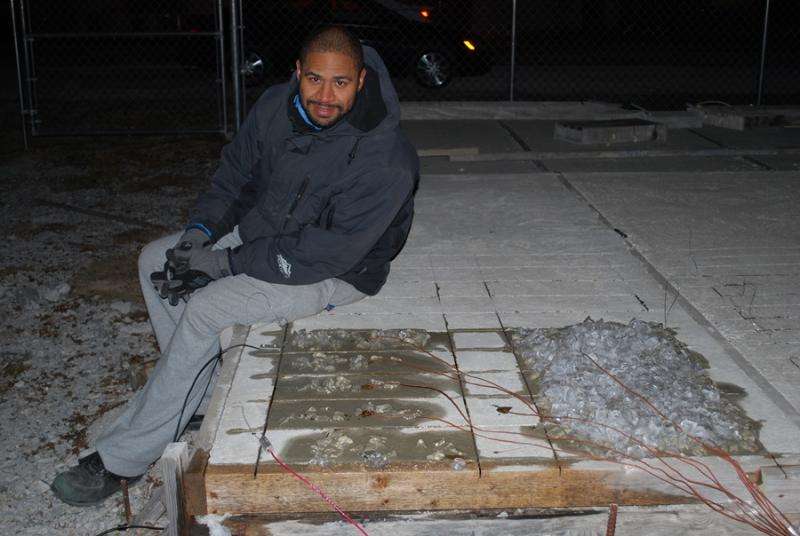Engineering graduate student developing heated pavement system for airfield runways

Scraping ice off windshields, salting driveways, shoveling walks—all miserable activities associated with winter weather. As much as individuals dread those activities, airport directors dread them even more because they have to carry them out on a much larger scale. However, graduate student Joseph Daniels is on the verge of developing a solution.
Daniels, a doctoral student in civil engineering, is studying heated pavement systems for airfields. The idea is to incorporate wiring into concrete, then transfer heat through the wires to warm the pavement.
The concept of a heated pavement system for airfields has been around for decades, but has yet to be implemented because of cost constraints. So, Daniels is taking a new approach.
"I am looking at using solar energy to heat the pavement," he said. "I am collecting solar energy, storing it in battery banks and then pushing the collected energy through the wiring system to heat the concrete."
In his preliminary research, Daniels has found an inch of ice will melt from a heated pavement surface in under an hour.
"An inch of ice is not a typical condition, but I wanted to get worst case scenario results," he said.
Airfields are currently cleared of ice with snow plows, chemical deicers and salts. However, these products can be damaging to the pavement, causing cracking, spalling and surface scaling.
In addition to the damaging effects, the current process lacks in efficiency.
"When snowy and icy conditions are present throughout the day, maintenance crews have to continue plowing and applying chemicals all day long," Daniels said. "That's not something you have to worry about with a heated pavement system."
The lack of efficiency can also impact flyer safety, which is a big concern for the Dwight David Eisenhower Research Fellow.
"Last year, a plane landing at LaGuardia airport skidded off the runway and crashed into a berm upon landing," Daniels said. "The runway had been cleared of snow and ice just five minutes before, but within that time frame the ice reappeared, preventing the plane from gaining traction on the ground."
Though these types of incidents are rare, Daniels wants to prevent them altogether.
Daniels said it will likely be two or three more decades before a heated pavement system is employed on a drastic scale, but he thinks real progress is being made.
"I feel like we're on the cusp of this research actually being implemented, and I want my research approach to be recognized and seen as credible in the field," he said.
Provided by University of Arkansas



















